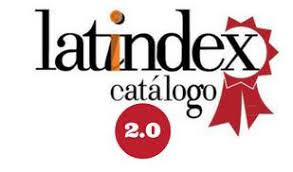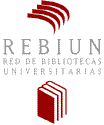Ecological interventions to improve thermal comfort in a schoolyard in Arequipa, Perú
DOI:
https://doi.org/10.22320/07190700.2025.15.01.07Keywords:
thermal comfort, ENVI-met, schoolyard, microclimateAbstract
Schoolyards have become residual spaces lacking thermal comfort due to increased construction to accommodate student overpopulation. As a result, ecological architectural strategies were simulated to demonstrate their effectiveness in improving thermal comfort in Arequipa, Perú; based on an analysis of children's standard physiological temperature. A mixed-methods approach was used, employing Sun Path for solar analysis, based on the SOPARC Protocol, and on-site measurements. The results obtained in situ were then used with RayMan to verify the strategies applied in Revit and ENVI-met. Results show an improvement in thermal sensation, with the most notable intervention being the change from dirt to grass paving, the addition of tree vegetation, and the implementation of an ecological greenhouse. As such, this research validates the optimization of thermal conditions through prior analysis and subsequent intervention via simulation.
Downloads
References
ABDALLAH, A. S. H., (2022). Passive design strategies to improve student thermal comfort in Assiut University: A field study in the Faculty of Physical Education in hot season. Sustainable Cities and Society, 86, 104110. https://doi.org/10.1016/j.scs.2022.104110 DOI: https://doi.org/10.1016/j.scs.2022.104110
AKOUMIANAKI-IOANNIDOU, A., PARASKEVOPOULOU, A. T., y TACHOU, V. (2016). School grounds as a resource of green space to increase child-plant contact. Urban Forestry & Urban Greening, 20, 375–386. https://doi.org/10.1016/j.ufug.2016.10.009 DOI: https://doi.org/10.1016/j.ufug.2016.10.009
BATES, C. R., BOHNERT, A. M., y GERSTEIN, D. E. (2018). Green Schoolyards in Low-Income Urban Neighborhoods: Natural Spaces for Positive Youth Development Outcomes. Frontiers in Psychology, 9, 805. https://doi.org/10.3389/fpsyg.2018.00805 DOI: https://doi.org/10.3389/fpsyg.2018.00805
BERNARDES, M., y VERGARA, L. G. L. (2017). Aprendiendo entre la naturaleza: Una revisión de los beneficios de los espacios verdes en el ambiente escolar. Arquitecturas del Sur, 35(52), 96–103. https://doi.org/10.22320/07196466.2017.35.052.09 DOI: https://doi.org/10.22320/07196466.2017.35.052.09
BINABID, J., ALYMANI, A., y ALAMMAR, A. (2024). Optimizing Outdoor Thermal Comfort for Educational Buildings: Case Study in the City of Riyadh. Buildings, 14(11), 3568. https://doi.org/10.3390/buildings14113568 DOI: https://doi.org/10.3390/buildings14113568
CIBSE. (s.f.). Guide A: Environmental Design. Chartered Institution of Building Services Engineers, de https://ierga.com/wp-content/uploads/sites/2/2017/10/CIBSE-Guide-A-Environmental-design.pdf
DENG, J. Y., y WONG, N. H. (2020). Impact of urban canyon geometries on outdoor thermal comfort in central business districts. Sustainable Cities and Society, 53, 101966. https://doi.org/10.1016/J.SCS.2019.101966 DOI: https://doi.org/10.1016/j.scs.2019.101966
DUARTE-TAGLES, H., SALINAS-RODRÍGUEZ, A., IDROVO, Á. J., BÚRQUEZ, A., y CORRAL-VERDUGO, V. (2015). Biodiversidad y síntomas depresivos en adultos mexicanos: exploración de los efectos benéficos del ambiente. Biomédica, 35(2), 46–57. https://doi.org/10.7705/BIOMEDICA.V35I0.2433 DOI: https://doi.org/10.7705/biomedica.v35i0.2433
GUO, W., JIANG, L., CHENG, B., YAO, Y., WANG, C., KOU, Y., XU, S., y XIAN, D. (2022). A study of subtropical park thermal comfort and its influential factors during summer. Journal of Thermal Biology, 109, 103304. https://doi.org/10.1016/J.JTHERBIO.2022.103304 DOI: https://doi.org/10.1016/j.jtherbio.2022.103304
Instituto Nacional de Estadística e Informática. (2022). Compendio Estadístico: Arequipa 2022. https://www.gob.pe/institucion/inei/informes-publicaciones/4132137-compendio-estadistico-arequipa-2022
JANSSON, M., ABDULAH, M., y ERIKSSON, A. (2018). Secondary school students’ perspectives and use of three school grounds of varying size, content and design. Urban Forestry & Urban Greening, 30, 115–123. https://doi.org/10.1016/j.ufug.2018.01.015 DOI: https://doi.org/10.1016/j.ufug.2018.01.015
Basurama (2024). La aventura de aprender. Cómo intervenir un patio escolar. Instituto Nacional de Tecnologías Educativas y de Formación del Profesorado (INTEF). https://www.libreria.educacion.gob.es/libro/la-aventura-de-aprender-como-intervenir-un-patio-escolar_184810
LANZA, K., ALCAZAR, M., HOELSCHER, D. M., y KOHL, H. W. (2021). Effects of trees, gardens, and nature trails on heat index and child health: design and methods of the Green Schoolyards Project. BMC Public Health, 21, 98. https://doi.org/10.1186/s12889-020-10128-2 DOI: https://doi.org/10.1186/s12889-020-10128-2
LAVILLA CERDÁN, L. (2013). La observación sistemática. Revista de Claseshistoria, (6), 374. http://www.claseshistoria.com/revista/2013/articulos/lavilla-observacion-sistematica.pdf
LINDEMANN-MATTHIES, P., y KÖHLER, K. (2019). Naturalized versus traditional school grounds: Which elements do students prefer and why? Urban Forestry & Urban Greening, 46, 126475. https://doi.org/10.1016/j.ufug.2019.126475 DOI: https://doi.org/10.1016/j.ufug.2019.126475
MAHMOUD, R. M. A., y ABDALLAH, A. S. H. (2022). Assessment of outdoor shading strategies to improve outdoor thermal comfort in school courtyards in hot and arid climates. Sustainable Cities and Society, 86, 104147. https://doi.org/10.1016/j.scs.2022.104147 DOI: https://doi.org/10.1016/j.scs.2022.104147
MARCHANTE GONZÁLEZ, G., y GONZÁLEZ SANTOS, A. I. (2020). Evaluación del confort y disconfort térmico. Ingeniería Electrónica, Automática y Comunicaciones, 41(3), 21-40. http://scielo.sld.cu/scielo.php?script=sci_arttext&pid=S1815-59282020000300021#B19
Meteo Consult. (25 de septiembre 2024). Previsiones meteorológicas y clima. https://www.meteoconsult.fr/
Ministerio de Salud. (2015). Guía técnica para la valoración nutricional antropométrica de la persona adolescente. Instituto Nacional de Salud. https://cdn.www.gob.pe/uploads/document/file/390257/guia-tecnica-para-la-valoracion-nutricional-antropometrica-de-la-persona-adolescente.pdf?v=1571242432
MORAKINYO, T. E., LAU, K. K.-L., REN, C., y NG, E. (2018). Performance of Hong Kong’s common trees species for outdoor temperature regulation, thermal comfort and energy saving. Building and Environment, 137, 157–170. https://doi.org/10.1016/J.BUILDENV.2018.04.012 DOI: https://doi.org/10.1016/j.buildenv.2018.04.012
NAMAZI, Y., CHARLESWORTH, S., MONTAZAMI, A. y TALEGHANI, M. (2024). The impact of local microclimates and Urban Greening Factor on schools’ thermal conditions during summer: A study in Coventry, UK. Building and Environment. 262, 111793. https://doi.org/10.1016/j.buildenv.2024.111793 DOI: https://doi.org/10.1016/j.buildenv.2024.111793
OREGI, X., GOTI, A., PÉREZ-ACEBO, H., ALVAREZ, I., EGUIA, M.I. y ALBERDI, E. (2024). Development of a Transdisciplinary Research-Based Framework for the Improvement of Thermal Comfort of Schools Through the Analysis of Shading System. Buildings, 15(1), 47. https://doi.org/10.3390/buildings15010047 DOI: https://doi.org/10.3390/buildings15010047
PASEK, M., SZARK-ECKARDT, M., WILK, B., ZUZDA, J., ŻUKOWSKA, H., OPANOWSKA, M., KUSKA, M., DRÓŻDŻ, R., KUŚMIERCZYK, M., SAKŁAK, W., y KUPCEWICZ, E. (2020). Physical Fitness as Part of the Health and Well-Being of Students Participating in Physical Education Lessons Indoors and Outdoors. International Journal of Environmental Research and Public Health, 17(1), 309. https://doi.org/10.3390/ijerph17010309 DOI: https://doi.org/10.3390/ijerph17010309
ROYÉ, D., MARTÍ EZPELETA, A., y CABALAR FUENTES, M. (2012). Aproximación al comportamiento espacial del estrés térmico en Galicia mediante el uso del índice bioclimático PET. https://aeclim.org/wp-content/uploads/2016/02/0092_PU-SA-VIII-2012-D_ROYE.pdf
SALAMEH, M. (2024). Modifying School Courtyard Design to Optimize Thermal Conditions and Energy Consumption in a Hot Arid Climate. Journal of Architectural Engineering, 30(4). https://doi.org/10.1061/jaeied.aeeng-1813 DOI: https://doi.org/10.1061/JAEIED.AEENG-1813
The Weather Channel. (25 de septiembre de 2024.). Weather forecast and climate information. https://weather.com/
Tiempo3. (25 de septiembre de 2024). El clima en Arequipa, Perú. https://www.tiempo3.com/south-america/peru/tacna/arequipa
TuTiempo.net. (25 de septiembre de 2024). El Tiempo: Pronóstico del tiempo para tu ciudad. https://www.tutiempo.net
Windy.com. (25 de septiembre de 2024). Wind map & weather forecast. https://www.windy.com/
Downloads
Published
How to Cite
Issue
Section
License
Copyright (c) 2025 Katherin Geraldine Vilcanqui-Coaquira, Patricia Delgado-Meneses, Valkiria Raquel Ibárcena-Ibárcena

This work is licensed under a Creative Commons Attribution-ShareAlike 4.0 International License.
The content of articles which are published in each edition of Habitat Sustentable, is the exclusive responsibility of the author(s) and does not necessarily represent the thinking or compromise the opinion of University of the Bio-Bio.
The author(s) conserve their copyright and guarantee to the journal, the right of first publication of their work. This will simultaneously be subject to the Creative Commons Recognition License CC BY-SA, which allows others to share-copy, transform or create new materials from this work for non-commercial purposes, as long as they recognize authorship and the first publication in this journal, and its new creations are under a license with the same terms.

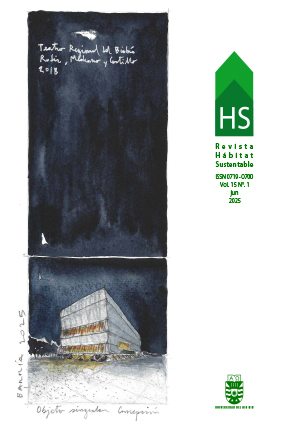
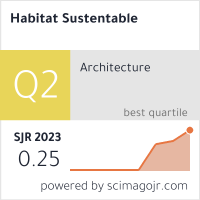








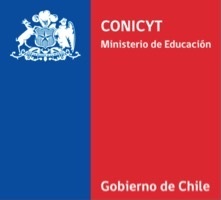 Scientific Information Program/Concurso Fondos de Publicación de Revistas Científicas 2018/ Proyecto Mejoramiento de Visibilidad de Revistas UBB (Código:FP180007).
Scientific Information Program/Concurso Fondos de Publicación de Revistas Científicas 2018/ Proyecto Mejoramiento de Visibilidad de Revistas UBB (Código:FP180007).
